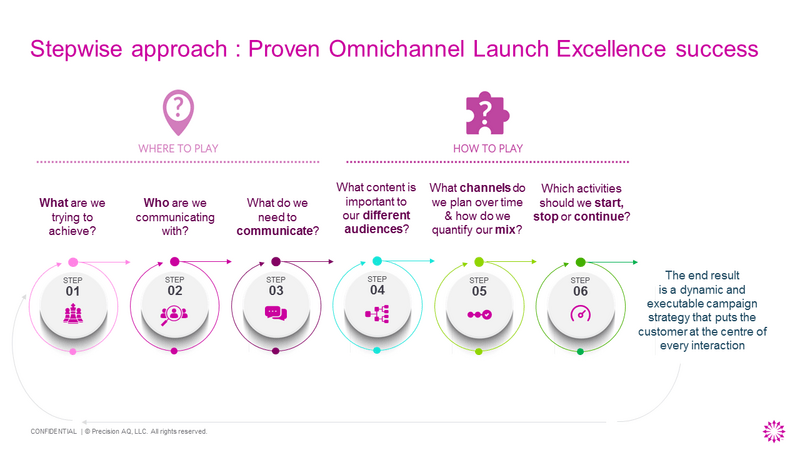In today's digitalised world, omnichannel engagement has become a crucial aspect of successful launches in the pharmaceutical industry. However, many pharmaceutical companies face challenges in achieving seamless and uniform customer engagement. To overcome these obstacles, Ben Harbour advises the below six-step approach in their Omnichannel Launch Excellence for Medical & Marketing course.

1. Strategic Objectives: Define the Launch Objective
The first step to a successful pharmaceutical launch is to clearly define the strategic objectives. This involves identifying the desired outcomes and setting measurable goals to track progress. It is important to consider factors such as market potential, target audience, and competitive landscape when setting launch objectives.
2. Audience Segmentation: Identify Key Launch Stakeholders
Understanding your target audience is crucial. Audience segmentation involves identifying and categorising key stakeholders, such as healthcare professionals, patients, and payers. This process helps tailor communication strategies to address the unique needs and preferences of each audience segment, resulting in more effective and targeted messaging.
3. Communication Priorities: Determine What to Communicate
Establishing clear communication priorities for launch involves determining the key messages to convey and the most effective ways to deliver them. Communication priorities should be aligned with the strategic objectives and tailored to the needs of the target audience. This step helps to ensure that the right information will be communicated to the right stakeholders at the right time.
4. Content Alignment: Identify Important Content for Different Audiences
Content alignment is the process of identifying and creating content that resonates with different audience segments. Informed by actionable customer insights, launch teams should consider factors such as audience preferences, information needs, and communication channels when developing content. By aligning content with audience segments, you can ensure that the messages are relevant and engaging, leading to increased stakeholder buy-in and improved launch outcomes.
5. Channel Prioritisation: Choose the Right Channels
Channel prioritisation involves selecting the most effective communication channels for reaching the target audience. Factors such as audience reach, engagement levels, and cost-effectiveness need to be considered when choosing channels. By prioritising channels based on these criteria, communication strategies are optimised, and you can ensure that the messages reach the intended audience.
6. Measure and Adapt: Monitor and Adjust Activities
Finally, launch strategies must continuously be measured and adapted to ensure success. This involves tracking key performance indicators (KPIs), analysing results, and making data-driven decisions to optimise launch activities. By regularly evaluating and adjusting their strategies, areas for improvement will be identified and informed decisions can be made about which activities to start, stop, or continue.
Conclusion
Following these six steps will enable launch teams to develop and execute a comprehensive omnichannel engagement strategy that maximises your chance of a successful product launch. By defining clear strategic objectives, segmenting the audience, prioritising communication and content, selecting appropriate channels, and continuously measuring and adapting your approach, you can achieve seamless and uniform customer engagement, ultimately driving launch success in today's increasingly digitalised world.
